Deciding on the best time to visit vietnam is a crucial step in your travel planning period. Vietnam’s elongated shape and diverse Vietnam geography mean the weather can vary significantly from north to south at any given time.
EssentialVietNamtravel.com understands that making the right trip timing decision during the climate analysis phase determines packing list choices and heavily influences activity choices. Unlike countries with uniform climates, Vietnam experiences distinct regional climates simultaneously. Finding the optimal travel window ensures better weather comfort, enhances destination accessibility, and maximizes your enjoyment.
This guide provides a detailed breakdown of weather patterns across Vietnam’s main regions throughout the year. We aim to move beyond simple recommendations and explain the underlying meteorological conditions, including rainfall, temperature, and potential risks like typhoons.
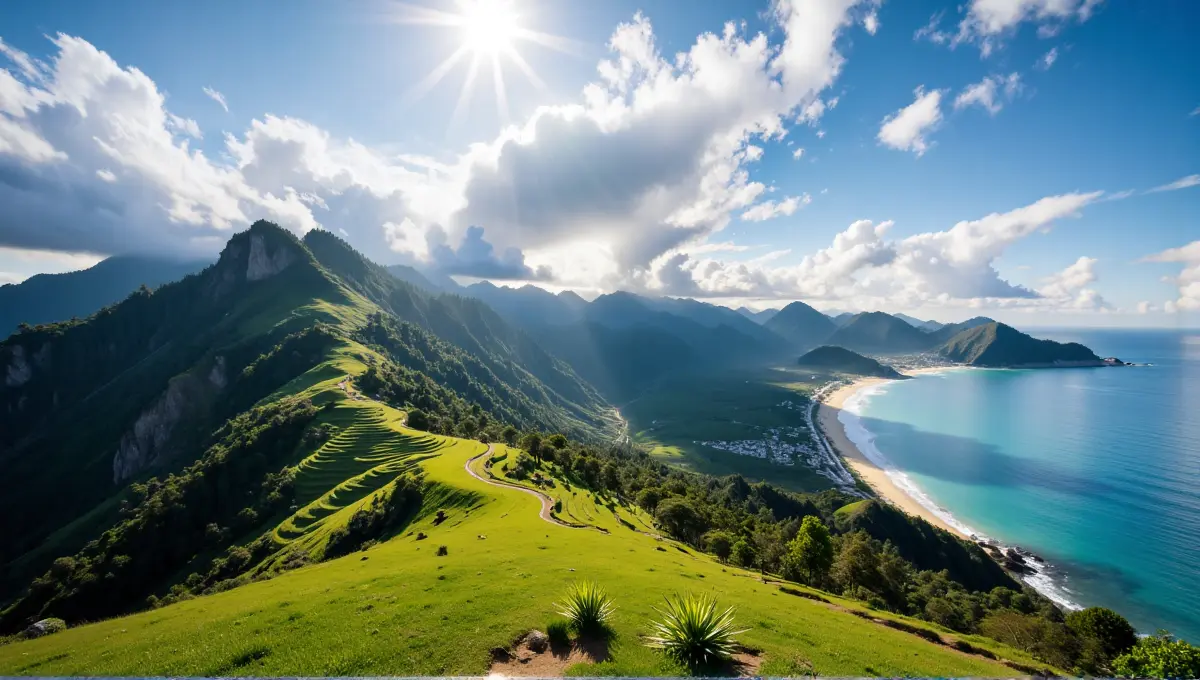
Understanding these factors helps you choose the preferred period to travel Vietnam based on your priorities, whether you’re seeking pleasant conditions, hoping to participate in specific events like the Hoi An Lantern Festival, or looking for the best time to visit vietnam to avoid crowds. This guide acts as a seasonal consideration tool for your Southeast Asia climate awareness.
We will explore the ideal Vietnam travel season month by month, highlighting the best time to visit vietnam for good weather in different areas. We will also discuss the worst time to visit Vietnam for specific regions due to factors like the rainy season peak or typhoon period. This detailed information will help you make informed decisions, considering regional variation and the temporal factor. Remember, the time of year matters greatly in Vietnam.
- Disclaimer: Weather is inherently unpredictable. This guide provides information based on historical weather patterns and typical seasonal consideration factors. Conditions can vary year to year. EssentialVietNamtravel.com strongly recommends checking detailed weather forecasts closer to your travel dates. Information regarding optimal timing relates to travel enjoyment and safety, touching upon YMYL aspects, making personal verification and flexibility essential.*
Ideal Vietnam Travel Season: Month-by-Month Weather in North, Central, and South Vietnam Regions
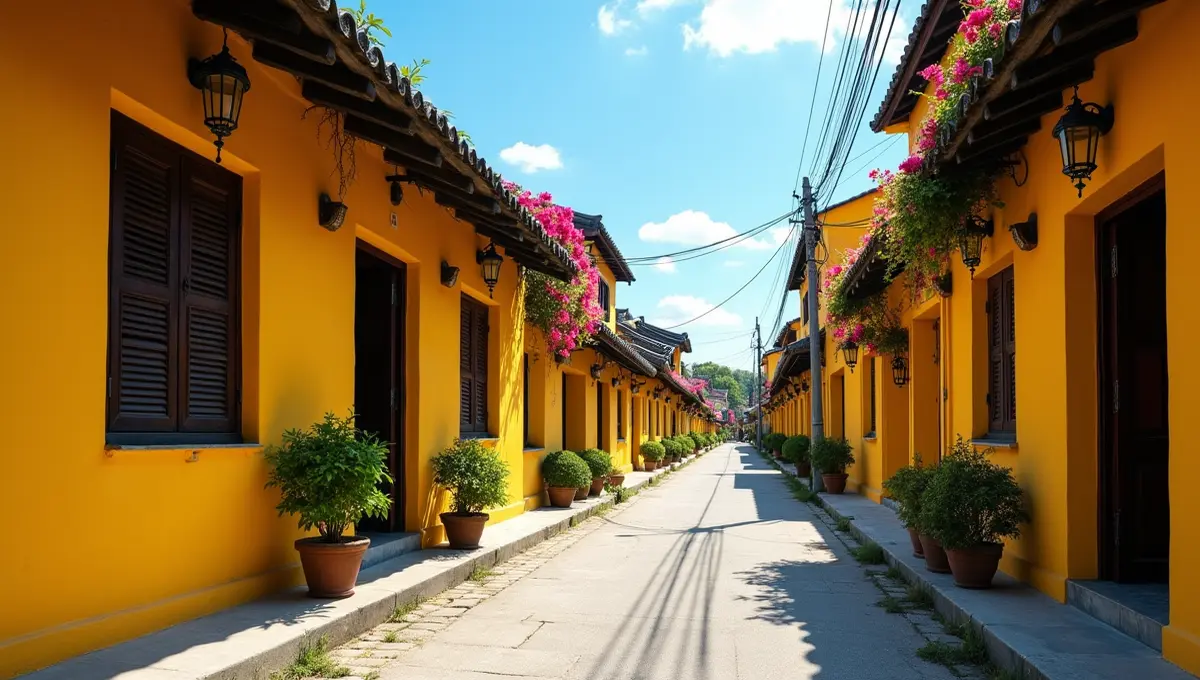
Vietnam’s climate is broadly split into three distinct zones due to its length. Finding the single best time to visit vietnam north and south simultaneously can be challenging, making regional understanding key. This section breaks down the typical month-by-month conditions for each major region, helping you find ideal months by region.
Understanding this regional variation is the foundation for planning your trip. This forms the core of the climate analysis phase for your travel planning period. A regional map highlight can help visualize these zones.
North Vietnam Climate (Hanoi, Ha Long Bay, Sapa) – Best Months (e.g., October) & Considerations (Cool Dry season)
The North Vietnam climate experiences four distinct seasons, unlike the tropical south. The best time to visit vietnam hanoi and ha long bay, and mountainous areas like Sapa, is generally during the autumn (September to November) and spring (March to May).
- Autumn (Sept-Nov): This is often considered the top season for Vietnam trip to the North. October (Vietnam, Region, North, Best Month, October) is particularly pleasant. Expect cool dry weather (Vietnam, Region, North, Weather, Cool Dry), clear skies, comfortable temperature levels, and lower humidity levels. These conditions are excellent for city exploration comfort in Hanoi and ideal for cruising Ha Long Bay with good visibility. Trekking conditions in Sapa are also prime during this dry season period. Sunny days are common, though cool evenings require a light jacket, especially in the mountains where Sapa snow possibility exists in deep winter later. You might see a clear sun icon dominating weather reports.
- Spring (Mar-May): Spring offers another optimal travel window. March sees warming temperatures and generally dry conditions. April and May get progressively warmer and slightly more humid before the summer rains begin. This period offers good photography opportunities with blooming flowers, potentially including rare flower blooming period sights depending on the exact location and timing. However, late spring can sometimes see early rains.
- Winter (Dec-Feb): Winter is cool and dry but can get quite cold, especially in the mountains. Hanoi experiences overcast days. Ha Long Bay can be misty or foggy, impacting views. Sapa can be very cold. While dry, it’s not ideal for those seeking warmth. December is generally dry but cool.
- Summer (Jun-Aug): Summer brings the highest temperature readings, high humidity levels, and the rainy season peak, particularly in July (Region, North, Avoid Month, July). Heavy downpours are frequent, though often short-lived, often symbolized by a rain cloud symbol. Flooding risk can increase in certain areas. This period is generally considered less ideal for extensive travel in the North due to the weather comfort factor and potential disruption.
Central Vietnam Weather (Hue, Da Nang, Hoi An, Nha Trang) – Best Months (e.g., March) & Considerations (Sunny Warm periods, Typhoon season avoidance)
Central Vietnam weather is notoriously complex due to the influence of the Truong Son mountain range and its long coastline weather influence. The region has distinct dry and wet seasons, but the timing differs from the North and South. The best time to visit vietnam beaches in this region, like near Da Nang or Nha Trang, is often during the extended dry season.
- Dry Season (Jan-Aug): This long period generally offers the most favorable conditions. The best month is often cited as March (Vietnam, Region, Central, Best Month, March) through May/June, offering sunny warm weather (Vietnam, Region, Central, Weather, Sunny Warm) with clear skies and comfortable temperatures. This is ideal for exploring Hoi An Ancient Town, the imperial city of Hue (consider the Hue Festival if dates align), and enjoying coastal areas. January and February are pleasant but can be slightly cooler. July and August see rising temperatures and humidity, marking the extreme heat duration for the region, but remain mostly dry. A thermometer graphic would show rising averages.
- Rainy/Typhoon Season (Sept-Dec): Conditions change significantly from September onwards. Rainfall increases dramatically, peaking in October (Region, Central, Avoid Month, October) and November. This period carries a significant typhoon risk (Weather, Factor, Typhoon Risk). Typhoons originating from the east can bring torrential rain, strong winds, and potential flooding risk, particularly impacting coastal cities like Hoi An and Hue. Travel during this typhoon period is generally discouraged due to safety concerns and likely disruptions. Destination accessibility can be severely limited. This is often considered the worst time to visit Vietnam’s central coast.
South Vietnam Conditions (Ho Chi Minh City, Mekong Delta, Phu Quoc) – Best Months (e.g., December) & Considerations (Dry Sunny season vs. Rainy Season)
South Vietnam conditions are typically tropical, characterized by two main seasons: dry and rainy. Temperature remains relatively high year-round. The distinction lies mainly in rainfall and humidity levels.
- Dry Season (Dec-Apr):
- This is generally the preferred period to travel Vietnam’s South and considered the top season for Vietnam trip here. December (Vietnam, Region, South, Best Month, December) to February offers the most pleasant conditions with lower humidity and clear skies – ideal dry sunny weather (Vietnam, Region, South, Weather, Dry Sunny). March and April see temperatures rising, becoming quite hot and humid before the rains arrive.
- This dry season (Season, Name, Dry Season) is perfect for exploring Ho Chi Minh City, cruising the Mekong Delta during its lower water levels (though the Mekong Delta high water season in the rainy months offers different sights), and enjoying islands like Phu Quoc. This period generally provides good weather comfort.
- Rainy Season (May-Nov):
- The rainy season (Season, Name, Rainy Season) brings increased rainfall, usually in the form of heavy, short afternoon downpours rather than constant drizzle. High humidity (Season, Characteristic, High Humidity) is characteristic.
- June, July, and August (Region, South, Avoid Month, August) typically see the highest precipitation. While travel is still possible (downpours often clear quickly), outdoor activities can be interrupted. The weather is hot and humid.
- However, this off-peak season can mean fewer tourists and sometimes lower prices. The countryside, especially the Mekong Delta, becomes incredibly lush and green. Some find this period acceptable if prepared for the rain.
Decoding Vietnam’s Weather Patterns: Dry Season vs. Monsoon Season Impact
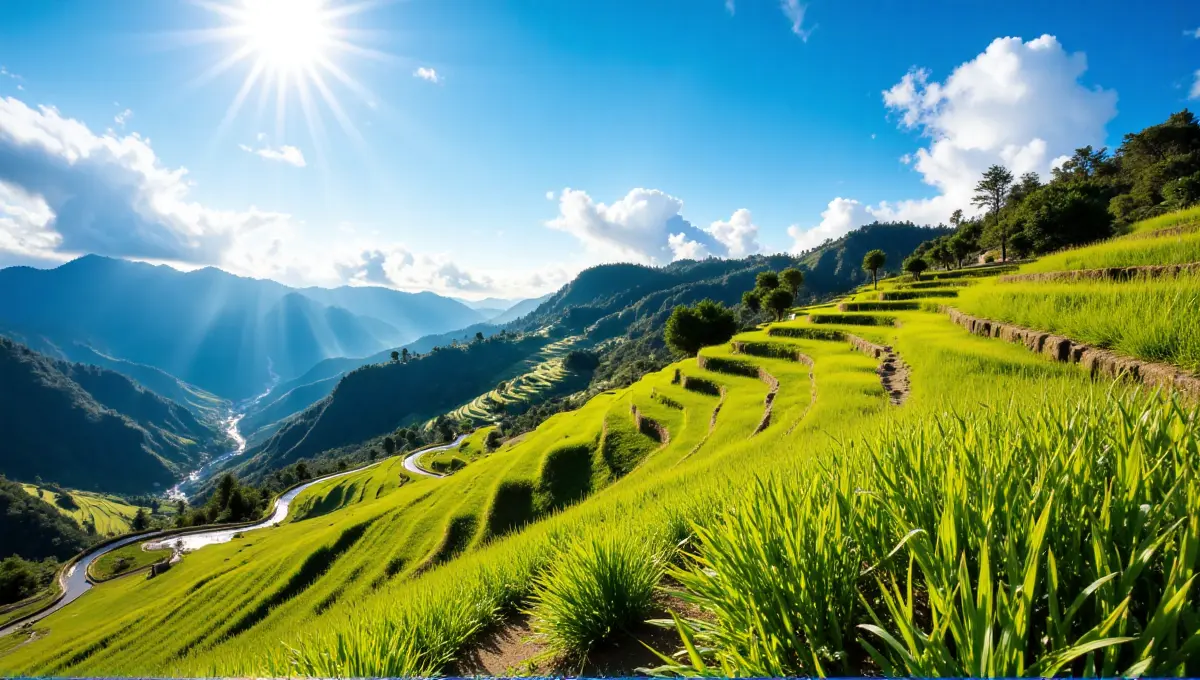
Understanding the fundamental difference between Vietnam’s dry season and monsoon season (often called the rainy season) is key to planning. These overarching weather patterns dictate the primary meteorological conditions you’ll encounter. Vietnam’s climate is heavily influenced by two monsoon systems impact, leading to distinct wet and dry periods that vary regionally. This seasonal consideration is paramount in determining the best time to visit vietnam for good weather and avoiding weather impacts enjoyment becoming negative.
Characteristics of the Dry Season (Less Rain, Lower Humidity levels)
The dry season (Season, Name, Dry Season) is generally characterized by significantly less rain (Season, Characteristic, Less Rain) compared to the monsoon months. This often translates to more sunny days and clearer skies, enhancing photography opportunities.
Another major advantage is lower humidity levels, particularly noticeable in the North during its cool dry winter and in the South during its pleasant dry months (December-February). Lower humidity contributes significantly to overall weather comfort, making sightseeing and outdoor activities more enjoyable.
While occasional showers can still occur, extended periods of dry weather are the norm. This season generally aligns with the peak season for tourism in many regions due to the favorable conditions, offering good destination accessibility. It’s the best season (Activity, City Tour, Best Season, Dry Season) for activities like extensive city tour exploration.
Understanding the Rainy Season (Increased Rainfall, High Humidity, Regional Variations)
The rainy season (Season, Name, Rainy Season) is defined by the arrival of the monsoon winds, which bring increased moisture and consequently higher rainfall (Weather, Factor, Rainfall). A key characteristic is high humidity (Season, Characteristic, High Humidity), which can make the heat feel more intense, especially in the South and during the Northern summer.
The nature of the rain varies; the South often experiences short, intense afternoon thunderstorms, while the North might see more prolonged periods of rain during its summer monsoon peak. Central Vietnam’s rainy season (starting later, around September) is particularly intense due to the long coastline weather influence and mountainous terrain climate effects combined with potential typhoons.
While lush landscapes are a benefit, travel can be disrupted, some remote areas might face flooding risk, and outdoor activity suitability decreases. This period often corresponds to the off-peak season, meaning tourist density might be lower.
When to Reconsider Your Trip: Navigating Rainfall, Humidity, and Typhoon Risk by Month
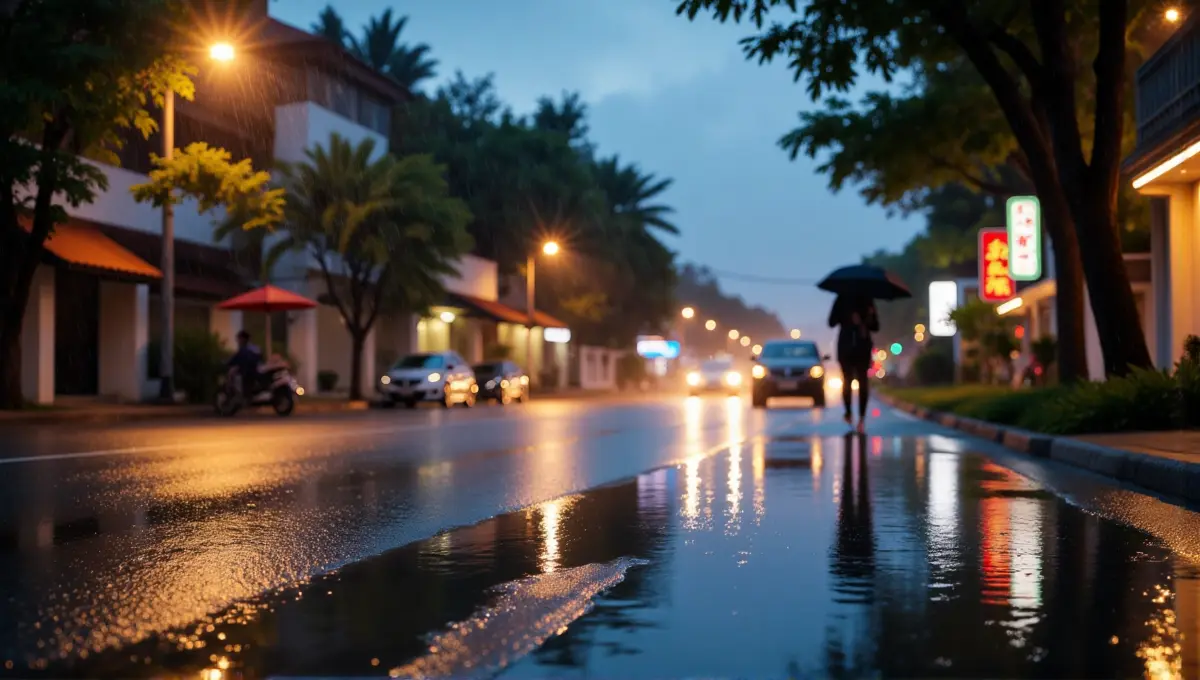
While knowing the general dry and rainy seasons is helpful, a deeper dive into specific risks associated with certain months can prevent disappointment or disruption. High rainfall, intense humidity levels, and the potential for typhoons are key factors that define the worst time to visit Vietnam for particular regions.
This section highlights periods when avoiding extreme weather should be a priority in your trip timing decision. A quick check of a calendar page against these high-risk months is advisable during the climate analysis phase.
High Rainfall Months to Note by Region (e.g., North: July, Central: October, South: August)
Certain months consistently experience the highest rainfall (Weather, Factor, Rainfall) in each region. While downpours can occur anytime during the rainy season, these peak months present the greatest chance of prolonged wet weather impacting your plans.
- North Vietnam: July (Region, North, Avoid Month, July) and August typically see the heaviest rains, coinciding with peak summer heat and humidity. Outdoor activities like trekking become difficult.
- Central Vietnam: October (Region, Central, Avoid Month, October) and November are the wettest months, significantly increasing the flooding risk in low-lying areas like Hoi An and along rivers in Hue. This period correlates with rainfall at its peak.
- South Vietnam: While rain occurs from May to November, August (Region, South, Avoid Month, August) often records the highest precipitation levels, characterized by frequent, heavy afternoon showers. This period also sees the Mekong Delta high water season. Knowing these peak rainy season peak months helps you plan around them if dry weather is a priority.
Understanding Typhoon Season in Central Vietnam (Typically September-November)
The typhoon period poses a significant threat primarily to Central Vietnam weather. Typhoons, forming over the Pacific Ocean, occasionally make landfall along Vietnam’s central coast, typically between September and November, though sometimes earlier or later.
These storms bring destructive winds, torrential rainfall, storm surges, and widespread flooding risk. Travel during an active typhoon is highly dangerous and leads to cancellations of flights, trains, and tours, severely impacting destination accessibility.
EssentialVietNamtravel.com strongly advises avoiding travel plans specifically centered on coastal Central Vietnam during these peak typhoon risk months (Weather, Factor, Typhoon Risk). Monitor travel advisories carefully if considering travel near this period. This is a critical seasonal consideration.
Temperature Extremes: Peak Heat vs. Cooler Periods
Temperature (Weather, Factor, Temperature) is another factor influencing comfort.
- Peak Heat: North Vietnam experiences its hottest weather in June-August. Central Vietnam peaks around July-August. South Vietnam is hot year-round but feels most intense during March-May before the rains bring slight relief. This extreme heat duration combined with high humidity can be draining for sightseeing.
- Cooler Periods: North Vietnam has a distinct cool/cold winter from December to February, especially in mountainous areas (consider Sapa snow possibility). Central Vietnam is cooler around January-February. South Vietnam’s “coolest” period is December-January, though still warm by temperate standards. These periods offer relief from heat but require different packing. Consider cool evenings even in warmer seasons, particularly up north or in central highlands. Check a thermometer graphic representation for average monthly temperatures during your climate analysis phase. Consider checking the air quality index too, if relevant for your travel period.
Optimal Visit Timing Vietnam for Popular Activities: Beaches, Trekking & City Exploration

Choosing the optimal visit timing Vietnam often depends on the main activity you plan to pursue. Different weather conditions favor different pursuits. Whether your focus is beach vacation planning, challenging trekking conditions, or comfortable city exploration comfort, aligning your trip with the right season enhances the experience. This section provides recommendations for specific activities based on typical meteorological conditions. Understanding activity suitability based on the temporal factor is key, as different regions have different best times.
Best Time for Beach Vacation Planning (Focus on Sunny days in Central/South Coast – best time to visit vietnam beaches)
For the quintessential activity, beach holiday, you need sunny days and warm, dry weather. The best time to visit vietnam beaches generally falls within the dry seasons of the relevant coastal regions.
- South Coast (Mui Ne, Phu Quoc): The prime time is during the southern dry season, from December to April. Expect clear skies, calm seas, and excellent conditions for swimming and watersports. Water visibility for diving may also be better during this period.
- Central Coast (Nha Trang, Da Nang, Hoi An area): The long dry season from January to August offers many sunny months. The period from February/ March to May/June is often ideal, avoiding the peak heat of July/August while still enjoying warm, dry weather (Activity, Beach, Best Region, South Central often includes Nha Trang). Avoid the rainy/typhoon season (Sept-Nov).
- North Coast (Ha Long Bay area): While beautiful, the northern coast isn’t a primary beach destination like the center or south. The best swimming weather coincides with the warmer months (May-September), but this also overlaps with the rainy season. Autumn (Sept-Oct) offers pleasant weather but cooler water.
Ideal Trekking Conditions (Focus on Dry season in Northern Mountains like Sapa)
Activity, Trekking, particularly in the mountainous region, North (like Sapa, Ha Giang) (Activity, Trekking, Best Region, North), requires specific conditions for safety and enjoyment. Muddy trails, heavy rain, and fog can make trekking difficult or even dangerous.
- Ideal Months: The dry season (Best Season, Dry Season) in the North, specifically September-November and March-May, offers the best trekking conditions. During autumn (Sept-Nov), skies are often clearer, temperature is moderate, and rainfall is minimal, providing stunning views. Spring (Mar-May) is also good, though haze can sometimes occur, and temperatures rise towards May.
- Months to Avoid: Avoid the peak summer rainy season (June-August) due to heavy rainfall and muddy trails. Winter (Dec-Feb) is dry but can be very cold, with potential frost or even Sapa snow possibility, requiring specialized gear. Consider bird migration patterns or a specific fruit harvest season if these rare attributes align with your trekking interest and location.
Comfortable City Exploration Comfort (Pleasant Temperature and lower Rainfall in major cities)
Exploring Vietnam’s bustling cities like Hanoi, Ho Chi Minh City, Hue, or Hoi An (Activity, City Tour) is most enjoyable when the weather is pleasant. This usually means moderate temperature, lower humidity levels, and minimal rainfall.
- General Recommendation: The dry season (Activity, City Tour, Best Season, Dry Season) in each respective region typically offers the best city exploration comfort.
- Hanoi: Autumn (Oct-Nov) and Spring (Mar-Apr) are ideal.
- Hue/Hoi An/Da Nang: January to May/June offer pleasant conditions before the peak heat and subsequent rainy season.
- Ho Chi Minh City: The dry season (Dec-Mar) is most comfortable, particularly December and January with lower humidity. Walking tours, market visits, and enjoying street food are much more pleasant when not battling intense heat, high humidity, or frequent downpours. Good weather also enhances photography opportunities within urban environments. Weather impacts enjoyment significantly for city tours.
Peak Season vs. Shoulder Season Travel: Crowds, Costs, and Major Events (Tet Holiday)
Beyond weather, understanding the difference between peak season and shoulder season travel is vital for planning your best time to visit vietnam. These periods influence crowd levels (tourist density), price variations (travel cost fluctuation), and accommodation/flight availability. Major events like the Tet Holiday also significantly impact travel logistics and costs. This seasonal consideration affects your overall experience and budget.
Found Your Perfect Time? Book Your Vietnam Flights!
Now that you know the ideal season for your trip, secure the best flight deals to match.
Understanding Peak Season (Months like December-March, Pros/Cons: Good weather, Higher Prices, Tourist density)
Peak season generally coincides with the months offering the most favorable weather conditions in popular regions, typically December through March.
- Pros: Usually the best time to visit vietnam for good weather overall, particularly for multi-region trips covering north and south. More activities are reliably available. Vietnam tourism statistics show high numbers.
- Cons: Higher tourist density at popular sites (crowd levels increase). Higher prices (Holiday, Impact, High Prices, applies broadly to peak season too) for flights and accommodation (affects flight prices). Need to book transport and lodging further in advance. Less flexibility for spontaneous changes. The optimal travel window weather-wise often means more people.
Exploring Shoulder Season Benefits (Months like April-May, Sept-Nov, Pros/Cons: Fewer crowds, Value, Variable weather)
Shoulder season months bridge the gap between peak and off-peak (rainy) seasons. These include periods like April-May and September-November in many regions.
- Pros: Fewer crowds compared to peak season (crowd levels decrease). Potential for better value with lower price variations on flights and accommodation. Landscapes can be very lush, especially after rains (e.g., September/October in the North). Still offers potentially pleasant weather windows. Good time best time to visit vietnam to avoid crowds.
- Cons: Weather can be more variable and less predictable. Transition periods might see increased rainfall or lingering humidity. Some risk remains (e.g., late typhoons in Central Vietnam in November, early rains in May). Requires more flexibility. Not always the ideal Vietnam travel season weather-wise, but offers other benefits.
Navigating Tet Holiday Travel Challenges (Late Jan/Feb – High Prices, Limited services, Event participation)
The Vietnamese Lunar New Year, known as Tet (Holiday, Name, Tet), is the country’s most important festival. It usually falls in late January or early February (dates vary annually based on the lunar calendar). While offering unique event participation opportunities to witness Vietnamese culture, traveling during Tet Holiday presents significant challenges.
- Challenges: Significant Tet holiday travel impact. Transportation (flights, trains, buses) becomes extremely busy and expensive (High Prices – Holiday, Impact, High Prices) as Vietnamese people travel home. Many businesses, shops, restaurants, and even tourist sites close for several days (often a week or more). Finding accommodation and services can be difficult and costly.
- Recommendation: EssentialVietNamtravel.com strongly advises avoiding travel within Vietnam immediately before, during, and after Tet unless you are specifically visiting family, have all arrangements booked very far in advance, and are prepared for widespread closures and premium pricing. While it offers unique cultural insight, it’s often the worst time to visit Vietnam for logistical ease and sightseeing. Check festival schedules Vietnam for exact dates each year.
Quick Guide: Best Month Recommendations for Popular Vietnam Destinations
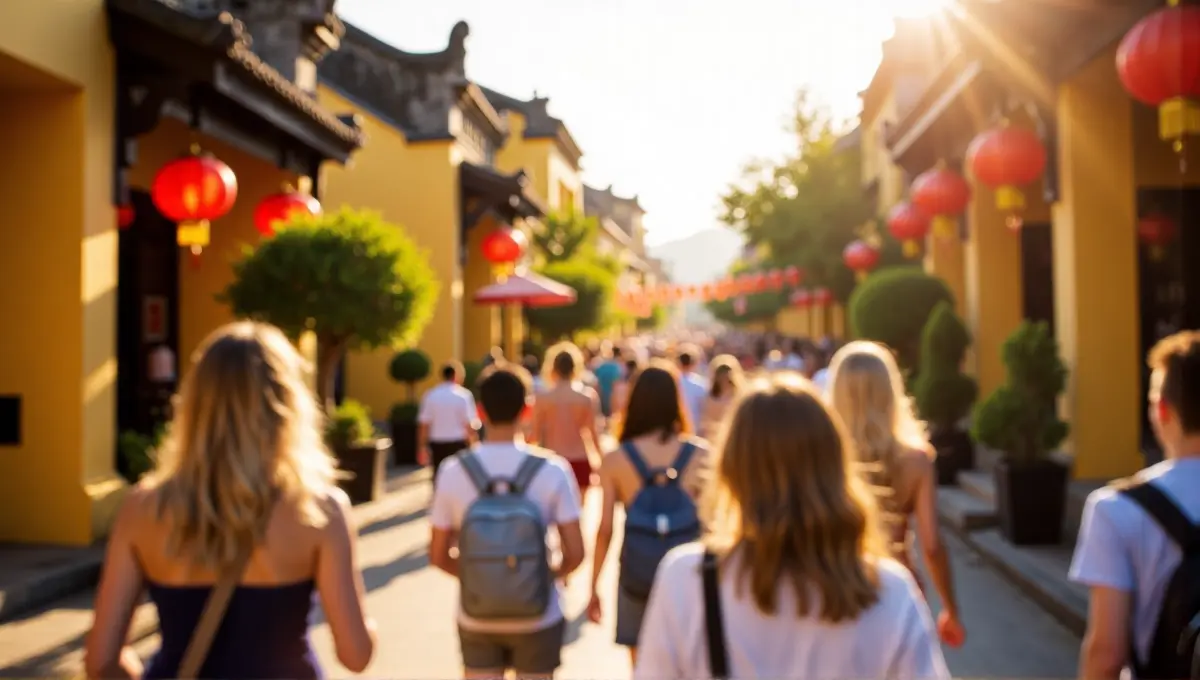
To summarize the detailed regional breakdown, here’s a quick reference for the generally recommended months (Vietnam prime visiting months) for some key destinations, focusing primarily on favorable weather conditions. Remember this is a simplification; always consider the nuances discussed earlier. Find the ideal month using this quick list as a starting point for your trip timing decision.
Recommended Months for Hanoi and Ha Long Bay
For the capital city Hanoi and the iconic Ha Long Bay in North Vietnam, the best time to visit vietnam hanoi and ha long bay is typically during Autumn (September – November) and Spring (March – May). October and November offer particularly pleasant, cool, dry weather with clear skies, ideal for exploring Hanoi’s Old Quarter and cruising the bay. March and April provide similar comfort before the summer heat arrives.
Avoid the peak summer months (June-August) due to heat, humidity, and heavy rain, and be prepared for potential cold and fog in winter (December-February). This timing aligns with the general cool dry period for the North.
Recommended Months for Hoi An and Da Nang
The central coast cities of Hoi An and Da Nang enjoy their best weather during the extended dry season. The optimal visit timing Vietnam for this region is generally from February to May/June. During these months, expect plenty of sunny days, warm temperatures suitable for beaches (best time to visit vietnam beaches), and minimal rainfall. March and April are often highlighted as prime months (sunny warm).
While July and August are still dry, they can be very hot. Crucially, avoid September to November/December due to the high risk of heavy rain, typhoons, and potential flooding. This is the preferred period to travel Vietnam’s central coast for most visitors.
Recommended Months for Ho Chi Minh City and Mekong Delta
South Vietnam experiences its most pleasant weather during the dry season, which runs from December to April. December and January are particularly favorable, offering lower humidity, bright sunny days, and comfortable warmth (dry sunny weather).
This makes it ideal for exploring the bustling streets of Ho Chi Minh City and taking boat trips in the Mekong Delta. While the rainy season (May-November) sees lush landscapes, the frequent afternoon downpours and high humidity make the dry season the more popular and comfortable choice for most travelers aiming for the best time to visit vietnam north and south if including the south. Consider the Mekong Delta high water season impact if visiting during rainy months.
Next Steps in Your Vietnam Planning
Choosing the best time to visit vietnam involves balancing ideal weather with factors like crowds, costs, and planned activities. By understanding the distinct climate zones and seasonal consideration factors for the North, Central, and South regions, you can make an informed trip timing decision.
Using this guide from EssentialVietNamtravel.com helps you pinpoint the optimal travel window for your specific needs, whether it’s the cool dry autumn in Hanoi, the sunny warm spring in Hoi An, or the dry sunny winter in the Mekong Delta. Remember to check forecasts closer to your date and embrace the unique charm Vietnam offers in any season.



